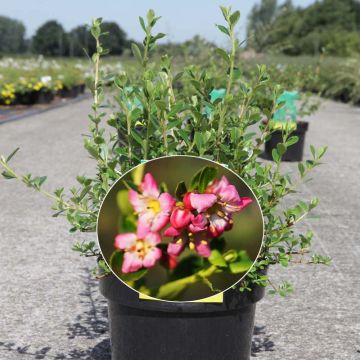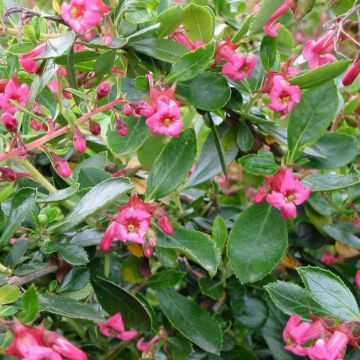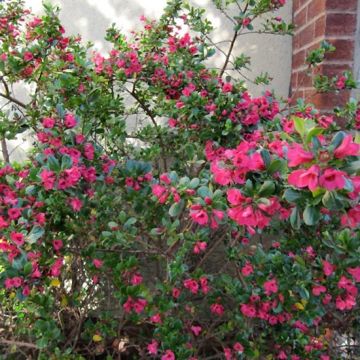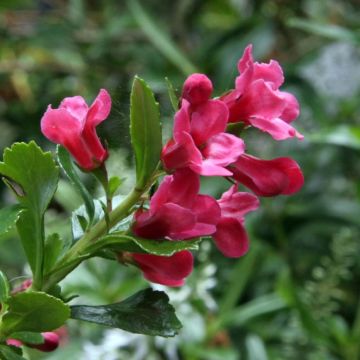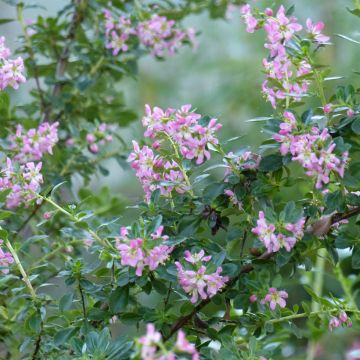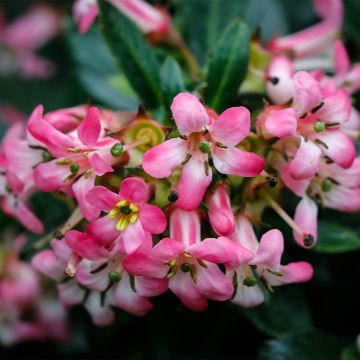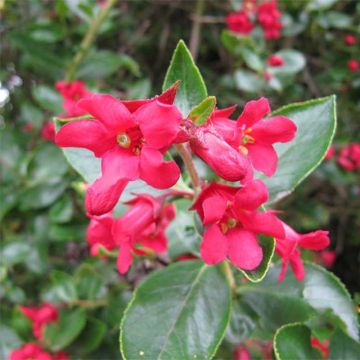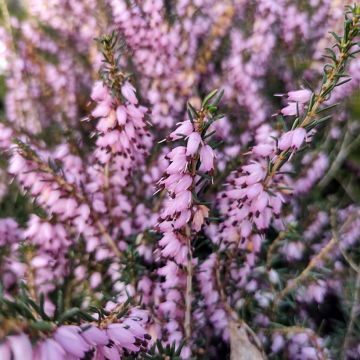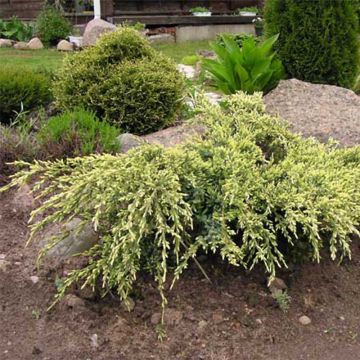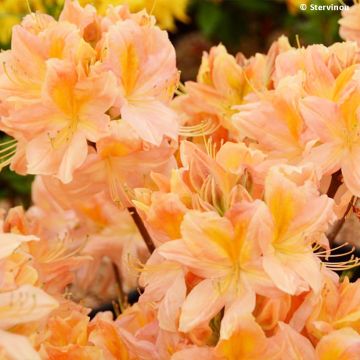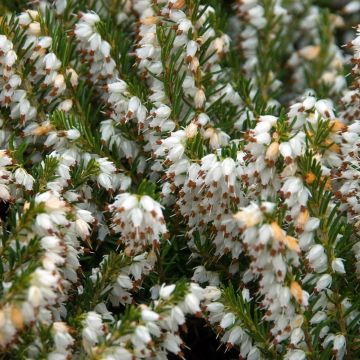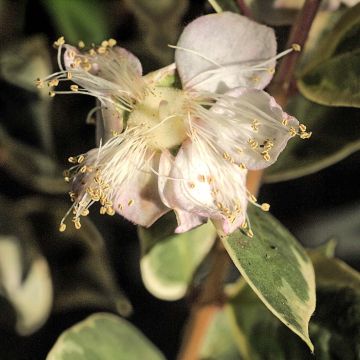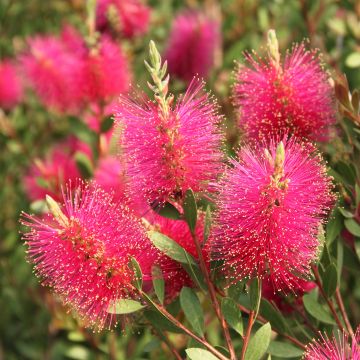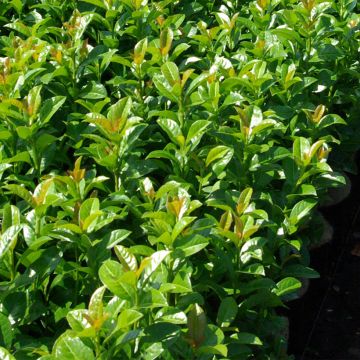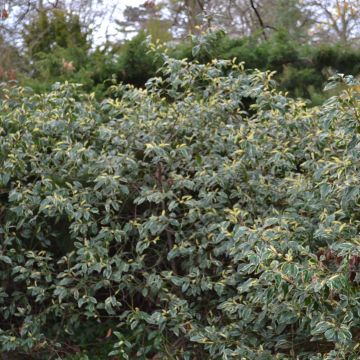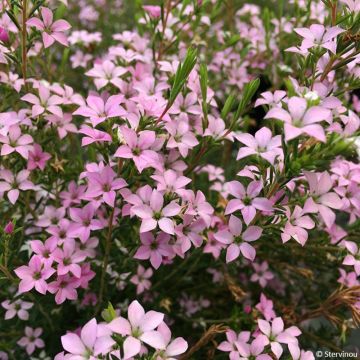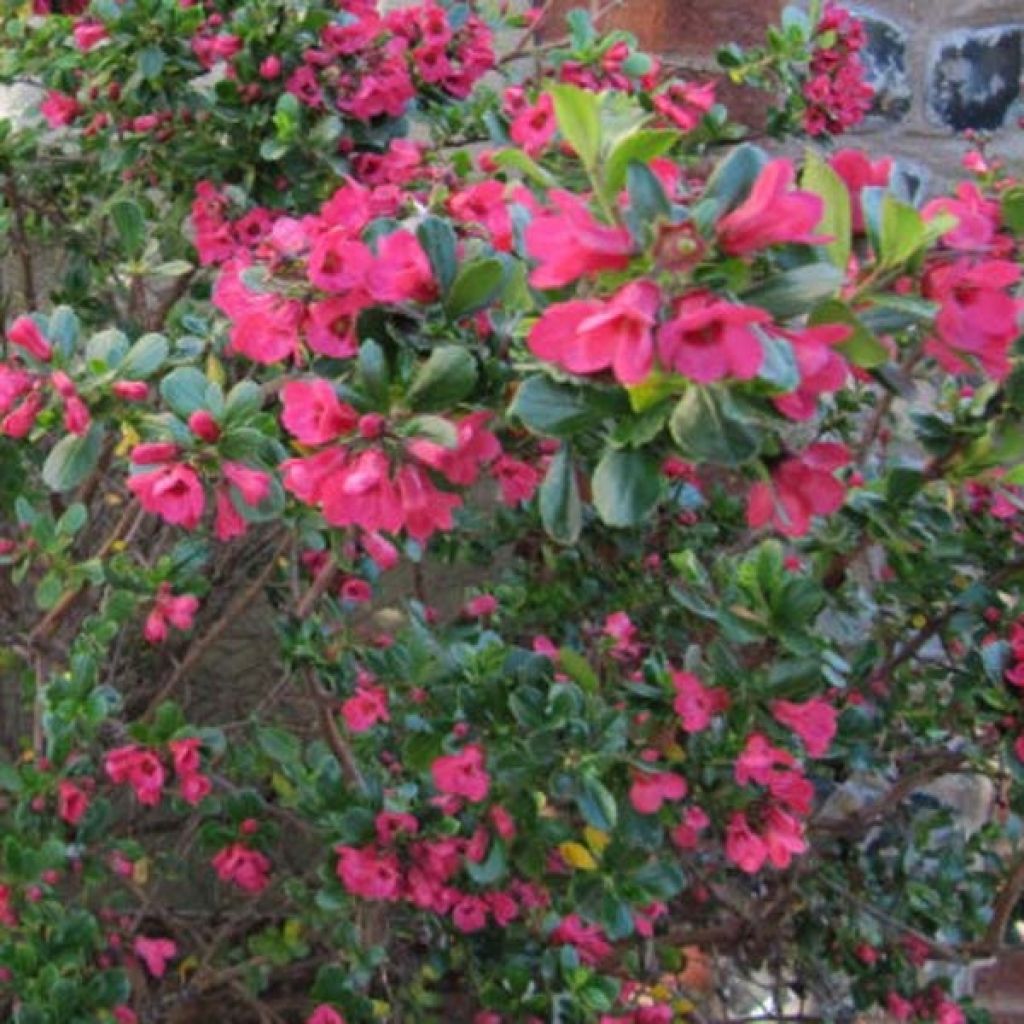

Escallonia Darts Rosy Red
Escallonia Darts Rosy Red
Escallonia Dart's Rosy Red
Redclaws
I have just received the rostrate Dart's escallonia bush that I ordered and I am disappointed. The flowers do not match at all those in the photo on the website. Neither the same colour, nor the same shape. Hopefully, the evergreen foliage of the bush I received will be as I want and as indicated on the website.
Sandrine, 10/06/2022
This item cannot be shipped to the selected country
Delivery charge from €5.90
More information
Schedule delivery date,
and select date in basket
This plant carries a 24 months recovery warranty
More information
We guarantee the quality of our plants for a full growing cycle, and will replace at our expense any plant that fails to recover under normal climatic and planting conditions.
From €5.90 for pickup delivery and €6.90 for home delivery
Express home delivery from €8.90.

Does this plant fit my garden?
Set up your Plantfit profile →
Description
An original bush, native to South America, the Escallonia Dart's Rosy Red produces rich carmine pink flowers in the heart of summer.
A vigorous shrub with numerous arched branches, the Escallonia 'Dart's Rosy Red' forms a dense bush, with a rounded habit, as tall as wide, measuring 2m (6 ft 7 in) to 2.50m.
Its carmine-pink flowers, in the shape of a semi-open tube, bloom from the beginning of summer. Its small and ovate leaves measure 3-4cm (1.2-1.6 in) in length and 1 to 2cm (0.4 to 0.8 in) in width. They are evergreen and shiny, dark green.
Originating from the Andes mountain range, the escallonia is hardy down to -10C°, beyond that, it will need to be planted in a sheltered location, against a south-facing wall or protected by a hedge to the south or west. It is easy to grow and likes cool, well-drained, and rich soil. Easily placed, it can be planted in the back of a flower bed or on a terrace. It is often used as a privacy hedge in temperate regions,
It requires very little maintenance: a simple pruning with shears just after flowering will be necessary to maintain its compact habit, older plants can be pruned more heavily at the end of winter when there is no longer any risk of frost.
Report an error about the product description
Escallonia Darts Rosy Red in pictures
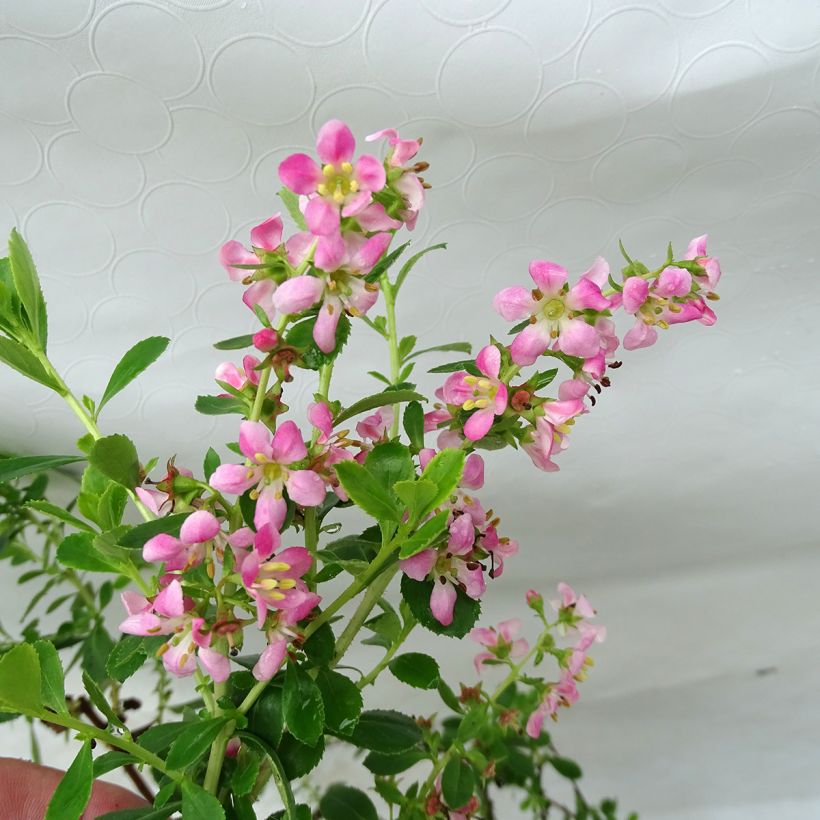

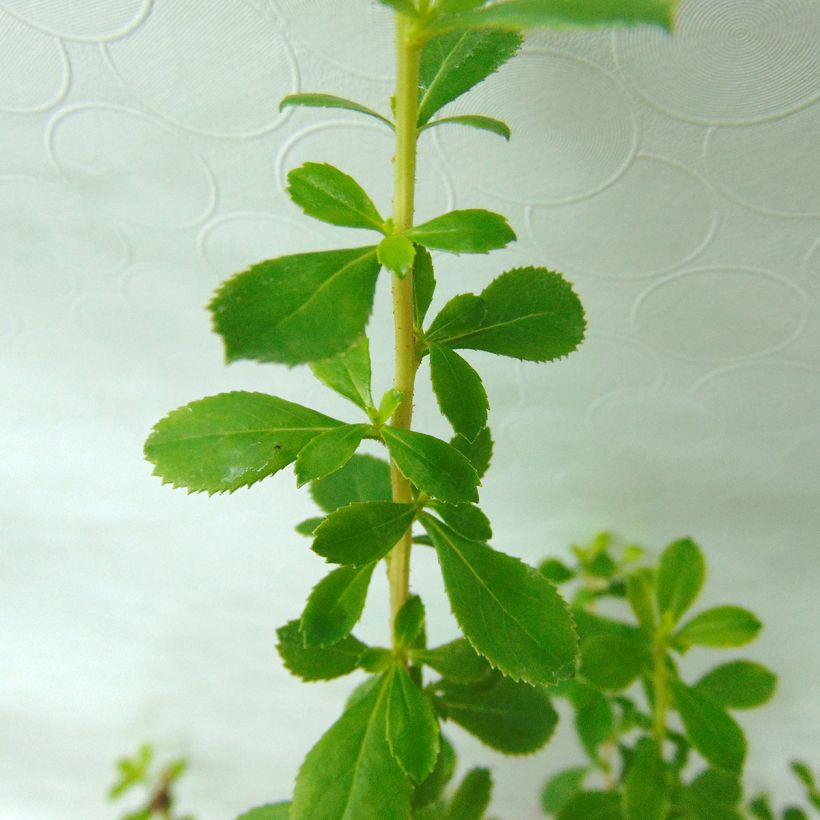

Plant habit
Flowering
Foliage
Botanical data
Escallonia
Dart's Rosy Red
Escalloniaceae
Redclaws
Other Escallonias
Planting and care
Escallonia Dart's Rosy Red appreciates sunny and semi-shaded exposures. It tolerates drought and sea spray as well as strong winds. Plant it in a light, acidic, and well-drained soil. It dislikes heavy and limestone soils and does not like stagnant moisture, especially in winter. If the soil is too limestone, it can be affected by chlorosis. When planting in a hedge, space the Escallonia 60 to 80 cm (23.6 to 31.5 in) apart. Trim them to one-third of their height in the first few years during their establishment so that they grow compact and densely. In a hedge, trim branches that disrupt symmetry when the hedge reaches the desired height. You can trim it into a ball shape. In colder regions, plant it in a protected location, south against a wall or west at the back of a bed or in a hedge.
Planting period
Intended location
Care
-
, onOrder confirmed
Reply from on Promesse de fleurs
Evergreen shrubs
Haven't found what you were looking for?
Hardiness is the lowest winter temperature a plant can endure without suffering serious damage or even dying. However, hardiness is affected by location (a sheltered area, such as a patio), protection (winter cover) and soil type (hardiness is improved by well-drained soil).

Photo Sharing Terms & Conditions
In order to encourage gardeners to interact and share their experiences, Promesse de fleurs offers various media enabling content to be uploaded onto its Site - in particular via the ‘Photo sharing’ module.
The User agrees to refrain from:
- Posting any content that is illegal, prejudicial, insulting, racist, inciteful to hatred, revisionist, contrary to public decency, that infringes on privacy or on the privacy rights of third parties, in particular the publicity rights of persons and goods, intellectual property rights, or the right to privacy.
- Submitting content on behalf of a third party;
- Impersonate the identity of a third party and/or publish any personal information about a third party;
In general, the User undertakes to refrain from any unethical behaviour.
All Content (in particular text, comments, files, images, photos, videos, creative works, etc.), which may be subject to property or intellectual property rights, image or other private rights, shall remain the property of the User, subject to the limited rights granted by the terms of the licence granted by Promesse de fleurs as stated below. Users are at liberty to publish or not to publish such Content on the Site, notably via the ‘Photo Sharing’ facility, and accept that this Content shall be made public and freely accessible, notably on the Internet.
Users further acknowledge, undertake to have ,and guarantee that they hold all necessary rights and permissions to publish such material on the Site, in particular with regard to the legislation in force pertaining to any privacy, property, intellectual property, image, or contractual rights, or rights of any other nature. By publishing such Content on the Site, Users acknowledge accepting full liability as publishers of the Content within the meaning of the law, and grant Promesse de fleurs, free of charge, an inclusive, worldwide licence for the said Content for the entire duration of its publication, including all reproduction, representation, up/downloading, displaying, performing, transmission, and storage rights.
Users also grant permission for their name to be linked to the Content and accept that this link may not always be made available.
By engaging in posting material, Users consent to their Content becoming automatically accessible on the Internet, in particular on other sites and/or blogs and/or web pages of the Promesse de fleurs site, including in particular social pages and the Promesse de fleurs catalogue.
Users may secure the removal of entrusted content free of charge by issuing a simple request via our contact form.
The flowering period indicated on our website applies to countries and regions located in USDA zone 8 (France, the United Kingdom, Ireland, the Netherlands, etc.)
It will vary according to where you live:
- In zones 9 to 10 (Italy, Spain, Greece, etc.), flowering will occur about 2 to 4 weeks earlier.
- In zones 6 to 7 (Germany, Poland, Slovenia, and lower mountainous regions), flowering will be delayed by 2 to 3 weeks.
- In zone 5 (Central Europe, Scandinavia), blooming will be delayed by 3 to 5 weeks.
In temperate climates, pruning of spring-flowering shrubs (forsythia, spireas, etc.) should be done just after flowering.
Pruning of summer-flowering shrubs (Indian Lilac, Perovskia, etc.) can be done in winter or spring.
In cold regions as well as with frost-sensitive plants, avoid pruning too early when severe frosts may still occur.
The planting period indicated on our website applies to countries and regions located in USDA zone 8 (France, United Kingdom, Ireland, Netherlands).
It will vary according to where you live:
- In Mediterranean zones (Marseille, Madrid, Milan, etc.), autumn and winter are the best planting periods.
- In continental zones (Strasbourg, Munich, Vienna, etc.), delay planting by 2 to 3 weeks in spring and bring it forward by 2 to 4 weeks in autumn.
- In mountainous regions (the Alps, Pyrenees, Carpathians, etc.), it is best to plant in late spring (May-June) or late summer (August-September).
The harvesting period indicated on our website applies to countries and regions in USDA zone 8 (France, England, Ireland, the Netherlands).
In colder areas (Scandinavia, Poland, Austria...) fruit and vegetable harvests are likely to be delayed by 3-4 weeks.
In warmer areas (Italy, Spain, Greece, etc.), harvesting will probably take place earlier, depending on weather conditions.
The sowing periods indicated on our website apply to countries and regions within USDA Zone 8 (France, UK, Ireland, Netherlands).
In colder areas (Scandinavia, Poland, Austria...), delay any outdoor sowing by 3-4 weeks, or sow under glass.
In warmer climes (Italy, Spain, Greece, etc.), bring outdoor sowing forward by a few weeks.

































